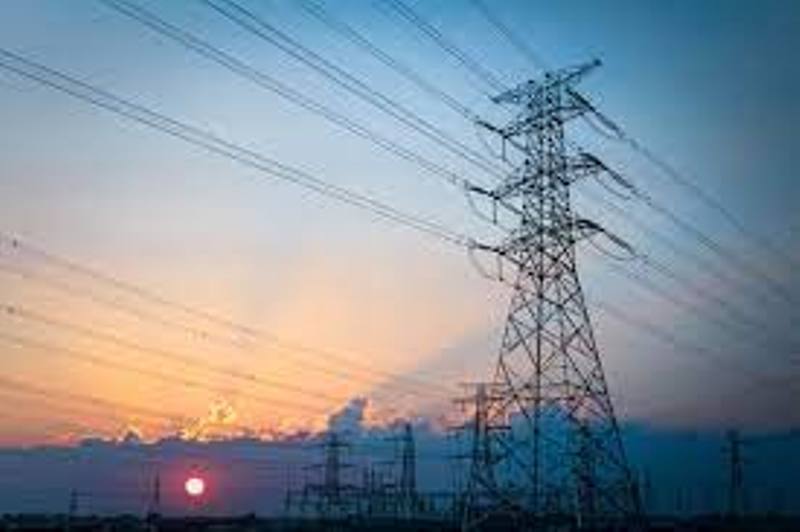By Vaibhav Chowdhary
A balance between emission and growth warrants integrated energy planning, leading to a low-cost transition pathway for sustainable growth.
India aspires to be a developed nation by 2047 with inclusive, people-centric sustainable growth and improved living standards, without compromising public health or increasing emissions.
The path to 2047 must also adhere to the nation’s climate and energy security goals.
Energy accounts for almost three-quarters of India’s greenhouse gas emissions and is the most significant lever for economic and social development.
A balance between emissions and growth warrants an integrated energy planning approach, leading to a low-cost transition pathway for sustainable development.
The key to achieving these intertwined goals is by ensuring energy efficiency and conservation, increasing the share of renewables to support rising electricity demand and reducing energy poverty by fixing the urban-rural energy gap through a people-centric approach.
Meeting energy needs sustainably
India’s per-capita primary energy consumption — about 23 percent of China and nearly 35 percent of the global average — must grow significantly to meet the aspirations of its growing economy and population,
By 2047, the ambition is for every Indian to have access to all forms of modern clean energy.
This rising demand can be met in a sustainable manner through LiFE or Lifestyle for Environment principles, while delivering quality of living standards equivalent to that of developed nations.
Total energy demand is expected to double in 25 years, translating to an increase in per capita energy consumption from 0.43 tonne of oil equivalent (toe) in 2022 to 0.8 toe by 2047, while per capita electricity consumption increases from 1331 kWh in 2023 to 3675 kWh in 2047.
The share of electricity in overall energy demand will increase from 18.3 percent in 2022 to 40.3 percent in 2047, facilitating an efficient and cleaner energy system.
Robust energy markets can enable the development of requisite infrastructure to ensure doorstep delivery across the country. The transformation of the rural economy will remove the developmental distance in energy services between the urban and the rural.
Currently, 56 percent of rural households rely on traditional biomass, such as wood, dung cakes, charcoal and crop waste, for cooking.
It is hoped this will completely shift to cleaner fuels by 2047 while in urban areas, a 100 percent switch to relatively low carbon-intensive fuels such as gas will be achieved much earlier.
Electric cooking is expected to catch pace, with about 15 percent households in rural areas and 20 percent in urban areas shifting to induction cooking by 2047.
Drivers of energy security
Energy security continues to play a pivotal role in shaping India’s energy transition. India imported 88.9 percent of crude oil, 43.3 percent of natural gas and 25.04 percent of coal in 2023.
With a greater thrust towards adoption of clean and green fuels, India’s consumption of fossil fuels will not see much increase despite doubling of energy demand.
The share of clean energy is expected to increase from 16 percent in 2022 to 40 percent of total primary energy mix by 2047, driven by a conducive ecosystem for growth of renewables and other cleaner fuels.
However, a cleaner transition opens up mineral security issues. Critical mineral extraction is heavily concentrated. Notably, China supplies 70 percent of graphite and 60 percent of rare earth elements today; the Democratic Republic of the Congo supplies 70 percent of cobalt and Australia, 55 percent of lithium.
The level of concentration is even higher for processing, with China dominating across the board. India needs to diversify its import basket of countries with strong extraction and manufacturing to avoid shifting from fuel dependency to mineral dependency.
Given the low emissions factor and cheaper technology, gas could usher in many benefits especially in rural houses where many women still use biomass for cooking, leading to extreme health issues.
From its existing reserves, natural gas supply is expected to increase more than 3.5 times by 2047 to meet the demands of a gas-based economy. India’s offshore exploration together with the expansion of domestic gas infrastructure will play a crucial role in this regard.
Nuclear technology, a relatively cleaner option which has been neglected for long, will see growth in the future.
Nuclear energy with high plant load factors — the ratio of actual energy generated to the maximum possible energy it could generate — of 80-90 percent has a critical role to play in providing low-emission baseload power. However, this technology comes with its own risks and long gestation.
Small Modular Reactors (SMR) with power capacity of up to 300 MWe are gaining attention. India’s finance minister Nirmala Sitharaman recently highlighted the need to promote small nuclear plants and announced a partnership with the private sector for research and development towards setting up Bharat Small Reactors.
Delivering clean power reliably from solar or wind, while keeping pace, needs further attention as it is impacted by infrastructure issues. The increased cost of creating this excess capacity coupled with system integration costs raises tariffs and disruption anxieties.
Pricing energy is the elephant in the room, with electricity subsidies being announced by one state after another. These subsidies not just put additional burden on the exchequer but also promote inefficient consumption.
Further, cross subsidy distorts the true cost of electricity and puts Indian industry at a disadvantage compared to its global competitors. Newer delivery models like Direct Benefit Transfer, if implemented in a phased manner, leads to large energy efficiency gains.
The subsidy burden may be reduced with faster penetration of solar rooftops, smart meters, feeder segregation and the modification of consumer demand for energy through various methods and behavioural change.
The way forward
NITI Aayog, an apex policy think-tank of the Government of India with the mandate of providing directional and policy inputs, has formed several inter-ministerial working groups to develop a roadmap for achieving a net zero economy by 2070.
These include working groups on agriculture, construction, manufacturing, transport, power and groups assessing what’s needed for the requisite critical minerals supply, macroeconomic implications, investment requirements and social aspects.
Taking cues from India Energy Security Scenario 2047, which primarily focused on India’s energy security, the current work is centred around building pathways for Net Zero by 2070, a “Call to Amrit Kaal”.
ALSO READ: Four obstacles to India joining UN security council
NITI Aayog collaborated with the Ashoka Centre for a People-centric Energy Transition to co-design this futuristic roadmap and facilitate convergent thinking across the ecosystem.
The net zero roadmap can be a starting point of an informed conversation towards cleaner and more innovative financing.
Vaibhav Chowdhary is a Director at the Ashoka Center for People-centric Energy Transition, a centre of Ashoka University, and Professor of Practice (V) at the Indian Institute of Technology, Kanpur.
Venugopal Mothkoor contributed to this article. He is a senior specialist at NITI Aayog as Director, Government of India, leads the energy modelling work at NITI Aayog where he works on exploring clean energy pathways for India to reach net zero by 2070.
Originally published under Creative Commons by 360info™.















